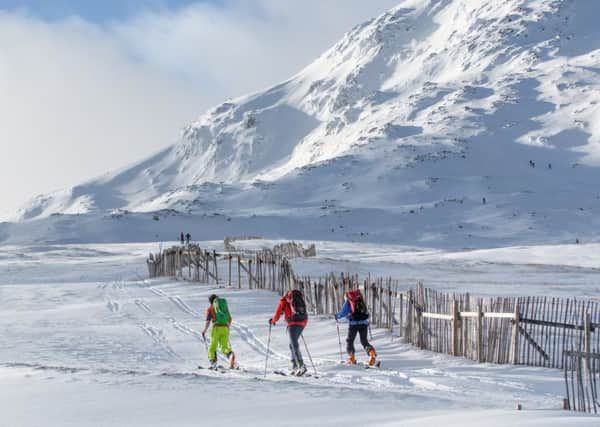Will there still be skiing in Scotland by 2080? A data scientist crunches the numbers


Now working for Scotland’s Rural College (SRUC), Spencer and a team from the James Hutton Institute were recently commissioned by the Cairngorms National Park Authority through ClimateXChange to look into the future of snow cover and temperature in the Cairngorms National Park. First, they looked at historic temperature and precipitation data going back 100 years and data on snow cover days from 1969 to 2005 to build up a detailed picture of how temperature fluctuations affect snow cover. They then used data modelling and climate projections from the Met Office to identify possible future trends for snow cover.
As Spencer notes in his paper, “there is a great deal of uncertainty in snow modelling.” However, even the most optimistic snow-lover would be hard pressed to look at his graphs for estimated days of snow cover in the Cairngorms between now and 2080 and conclude that there’s nothing much to worry about.
Advertisement
Hide AdAdvertisement
Hide AdAs most snowsports activity takes place above 600m, the two graphs of most importance to skiers and snowboarders are the ones for 600-800m and 800m and over; both show a fairly gradual rate of decline in snow cover for the next few years, followed by a much more severe drop after 2030. As the paper puts it: “Trends appear to remain consistent until [around] 2030, after which we estimate a steeper decline in snow cover duration. This change is likely due to a threshold temperature being exceeded, causing less snow to accumulate or persist.
“These declines are most noticeable for the highest elevations in the national park, with elevations above 800m estimated to have 30 to 40 days of snow cover on average each year by 2080.”
Given that elevations above 800m currently get an average of around 110 days’ snow cover each winter, a reduction to between 30 and 40 days is huge – a decrease of somewhere between 55 per cent and 63 per cent. And if you think 30-40 days of snow doesn’t sound too bad, remember that only applies to the upper reaches of Scotland’s ski areas. Between 600m and 800m, Spencer and his team predict there will only be around 20 days of snow cover each winter.
To put that into perspective, the Lecht ski centre has runs from 580m to 780m so – according to Spencer’s figures – it might only see snow lying on its slopes for 20 days each winter by 2080. For the two other resorts within the park boundaries – Glenshee and Cairngorm – things only look marginally better: Glenshee’s runs sit between 650m and 920m, while Cairngorm’s are between 630m and 1,150m; by 2080, then, many of the lower-altitude runs on their current piste maps could be as good as redundant.
Looking on the bright side, however, both of these resorts have some cracking terrain sitting above the 800m line. At Glenshee there’s also some lovely skiing beside the Glas Maol tow, for example. Meanwhile, over at Cairngorm, pretty much everything above the 765m funicular middle station should still be covered for 30-40 days a year by 2080. That means not just signature runs such as the White Lady and the Gunbarrel, but also the Ptarmigan Bowl, with its wide, gently-sloping beginners area and its extensive terrain park.
At a time when the future of the Cairngorm Mountain ski area is being fiercely debated, due to the closure of the funicular and the mooted £10 million cost of repairing it, it would seem sensible that any future plan should take Spencer’s study into account – and prioritise the runs and infrastructure at the top of the mountain over everything else.